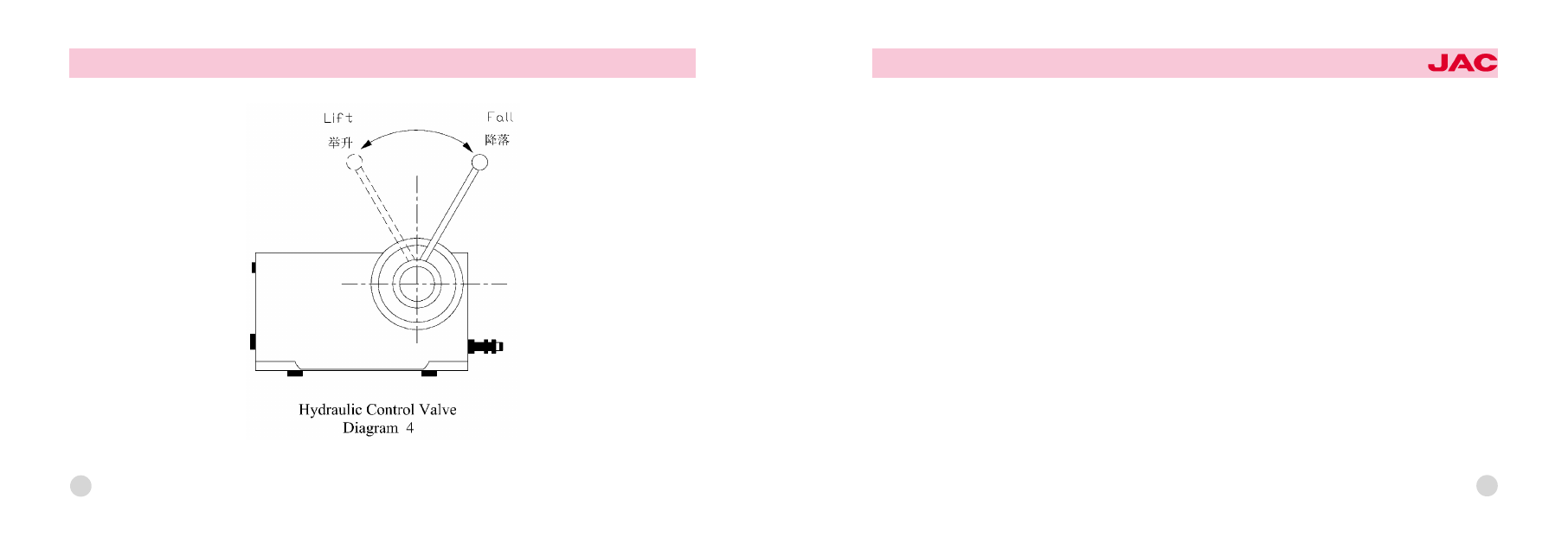JAC Trucks. Manual - part 65

2. Operation Instructions
The position of the handle(from left to right)院Lift寅Fall
192
OWNER爷S MANUAL
JAC HEAVY DUTY TRUCK
荫
Switching on the gear pump
Press the clutch pedal and turn the switch to the "on" position. Then release the clutch pedal smoothly and the gear
pump will start working.
荫
Carriage lift
After the gear pump is started, push the control handle to "lift" and the carriage begins rising at an uniform speed. In鄄
crease the throttle and the lifting will be faster. The increase of the throttle is not permitted when the carriage is lifted to
the maximum lifting angle.
荫
Carriage fall
Press the clutch pedal; turn off the switch; push the control handle to the "fall" position, then the carriage will start to fall.
The speed of falling can be regulated by the opening degree of the control valve.
荫
Pause control
If you want to stop the carriage during the process of lifting, you only need to press the clutch pedal. Meanwhile, the
control valve is still on the "lift" position. But if the pause will last for a long time, you need to turn off the switch. If you
want to stop the carriage during the process of carriage fall, push the control handle from "fall" to "lift".
Note: If you want to resume the lifting after pausing, release the clutch pedal and turn off the switch.
If you want to resume the falling after pausing, push the control handle to "fall".
193